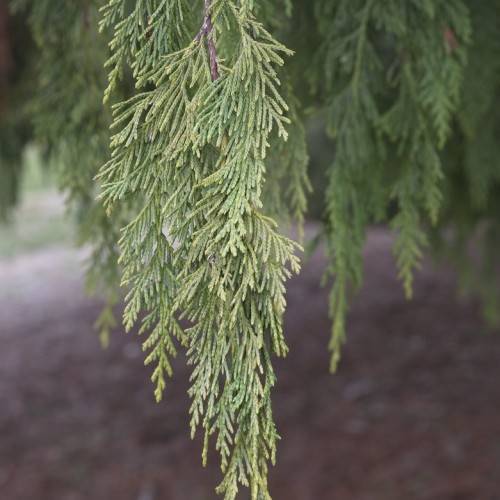
Nootka cypress
Cupressus nootkatensis ( syn. Chamaecyparis )
Also Known As - yellow cedarCycle:
Perennial
Watering:
Average
Hardiness Zone:
5
Flowers:
Flowers In Spring
Sun:
Full sun
Soil:
Acidic, Well-drained
Cones:
Yes
Growth Rate:
Moderate
Drought Tolerant:
Yes
Salt Tolerant:
Yes
watering
Nootka cypress (Cupressus nootkatensis) should be watered once a week with approximately 1 inch of water each time. Make sure to soak the soil completely and then wait for it to dry out completely before watering again. The amount of water can be increased if temperatures rise above 80°F, as this will cause the plant to use more water. A good way to ensure you are not over-watering is to water until the first few drops of water come out of the bottom of the pot. You should also remember to avoid wetting the foliage of the plant.
sunlight
Nootka cypress (Cupressus nootkatensis) must receive adequate sunlight in order to thrive and flourish. It grows best in full sunlight, requiring at least 5–6 hours of direct sunlight each day to promote healthy growth. As with most plants, the amount of sunlight required can vary depending on the season. In the summer, Nootka cypress needs longer hours of sunlight, up to 8 to 9 hours of direct sunlight. In the winter, the plant can withstand or tolerate shorter days as less sunlight is available. However, the amount of light should never be drastically reduced, as it can cause stress and weak growth. Nootka cypress prefers bright light but full shade is tolerated, although the plant may not flower or produce fruits under such conditions.
pruning
Nootka cypress generally does not require any kind of pruning, as long as it is given enough space to grow and reach its mature form. However, if you need to control size or for cosmetic purposes, pruning can be done in the late winter or early spring. Start pruning back branches that are at least 1-third of the total length of the tree or shrub to keep the right balance. Make sure when you are finished that the top of the shrub or tree is wider than the bottom. Trim any dead or diseased branches as soon as you notice them. Pruning should be done judiciously and should not be excessive.
